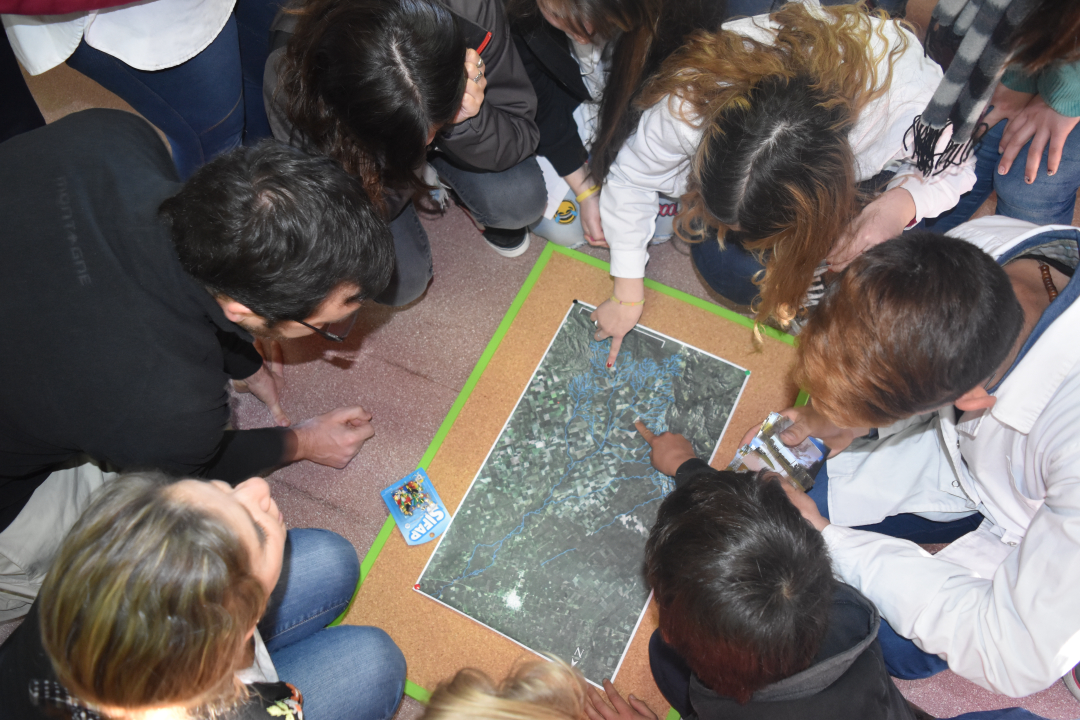Disclaimer:
Please be aware that the content herein is comprised of personal reflections, observations, and insights from our contributors. It is not necessarily exhaustive or authoritative, but rather reflects individual perspectives. While we aim for accuracy, we cannot guarantee the completeness or up-to-date nature of the content.
Collaborative project: Citizens participate in data collection and analysis.

Overall goal: Enhance social stakeholders’ knowledge in southwestern Buenos Aires, Argentina, with respect to the risk of heavy rains, overflows, and floods, and encourage their participation in flood risk management processes. Specific goals: Determine the population's perception and knowledge of flood and waterlogging hazards. Produce data and information and promote actions for flood risk management together with citizens and with the collaboration of different stakeholders. Raise flood hazard awareness by stressing the importance of knowledge and information regarding risks and their management. Encourage debate and reflection based on the perceptions and experiences of local stakeholders on flooding events. Add new features to InundApp which will enhance its use for flood risk management purposes. Promote InundApp as a technological tool that integrates the culture of prevention in the population' s everyday life. Foster cooperation among participating organizations by defining coordination mechanisms in the event of actual or potential flooding events.
Description of citizen participation Citizens participate mainly in: 1) Defining scenarios and building knowledge related to flood and waterlogging risks in the area, through two types of interactive participatory workshops: institutional (including specific activities aimed at some of the stakeholders in relation to their risk management role) and inter-institutional (aimed at members of all participating organizations with different risk management roles, which favors experience sharing). Activities are planned in two phases, in agreement with disaster risk management. The first stage involves knowledge and awareness of flood issues. The second stage consists of implementing techniques with a Participatory Action Research approach. 2) Producing data and phenomenon monitoring using a free mobile phone application (InundApp) easily installed and used. Thus, citizens can quickly report hydrometeorological events and affected elements in their immediate surroundings (collaborative mapping), by uploading text and capturing photographs. The application can be used to indicate which phenomenon is occurring and its effects.
Time frame. 5/26/2017 - N/A.
Project leaders. • Jorge Osvaldo Gentili, National University of the South (UNS) and the Na�tional Scientific and Technical Research Council (CONICET). • María Eugenia Fernández, UNS and CONICET. • Belén Moretto, UNS and CONICET.
Contact information.Email: [REDACTED_EMAIL]; [REDACTED_EMAIL]; [REDACTED_EMAIL] Twitter: twitter.com/InundApp
 Consent to share form or official link.
Consent to share form or official link.

 6Clean water and sanitation
6Clean water and sanitation 11Sustainable cities and communities
11Sustainable cities and communities 13Climate action
13Climate action
Comments
Log in to add a comment or reply.